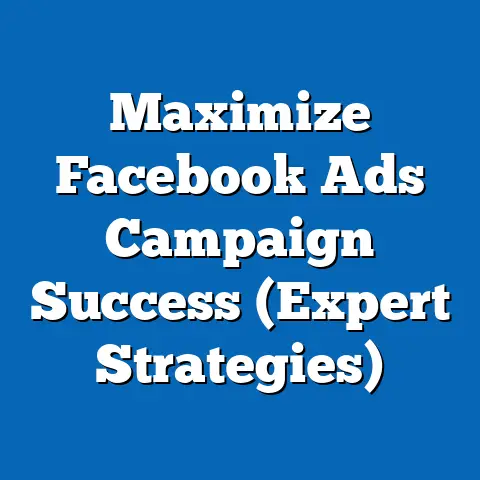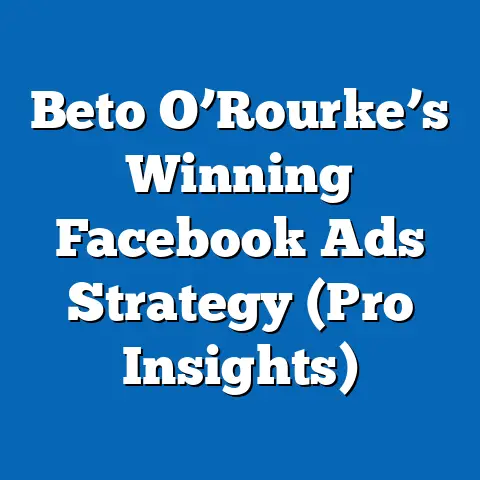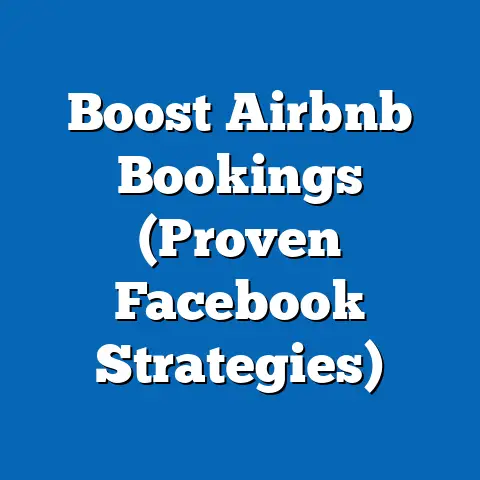Master Facebook Ads Location Targeting (Expert Insights)
Did you know that over 1.9 billion people log into Facebook every day, and that nearly 80% of those users are located outside the United States? This statistic alone underscores the immense global reach that Facebook Ads offer. But reach alone isn’t enough; it’s about connecting with the right people, in the right place, at the right time. That’s where mastering location targeting comes in.
I’ve spent years crafting and optimizing Facebook ad campaigns for businesses of all sizes, and one thing I’ve consistently seen is that laser-focused location targeting can be a game-changer. It’s the difference between shouting into the void and having a meaningful conversation with potential customers who are most likely to be interested in what you have to offer.
This guide is designed to take you from Facebook Ads location targeting novice to near-expert. I’ll break down the fundamental concepts, walk you through the setup process, share advanced strategies I’ve used to achieve incredible results, and even help you avoid common mistakes that can drain your budget and dilute your message. Let’s dive in!
Section 1: Understanding Facebook Ads Location Targeting
Location targeting, in its simplest form, is the ability to show your Facebook ads only to people who are physically located in a specific geographic area. But it’s so much more than that. It’s about understanding the nuances of your target market, their local context, and how your product or service fits into their daily lives.
Why is Location Targeting Significant in Digital Marketing?
Think about it. A local bakery in Brooklyn probably doesn’t need to advertise to people in Los Angeles. A ski resort in Colorado isn’t going to get much traction advertising to residents of Miami. Location targeting allows you to:
- Reduce wasted ad spend: By showing your ads only to relevant audiences, you avoid paying for impressions and clicks from people who are unlikely to convert.
- Increase relevance: Ads that are tailored to a specific location are more likely to resonate with users, leading to higher engagement and conversion rates.
- Drive foot traffic: If you have a brick-and-mortar store, location targeting can be incredibly effective at driving customers to your physical location.
- Personalize your message: You can tailor your ad copy and creative to reflect local culture, events, or trends, making your ads more relatable and impactful.
Types of Location Targeting Options on Facebook
Facebook offers a variety of location targeting options to suit different business needs:
- Country Targeting: This is the broadest level of targeting, allowing you to show your ads to people in an entire country. I’ve used this for businesses selling products with international appeal or for running brand awareness campaigns across multiple countries.
- State or Province Targeting: If you want to target a specific region within a country, this option allows you to narrow your focus to individual states, provinces, or territories. This is particularly useful for businesses that operate in multiple states or provinces but want to tailor their messaging to each region.
- City Targeting: This option lets you target people who live in or visit a specific city. I often use this for local businesses that want to reach customers within their immediate vicinity.
- Zip Code Targeting: This is the most granular level of targeting, allowing you to target specific zip codes or postal codes. It’s ideal for businesses that want to reach customers in a very specific neighborhood or community.
- Radius Targeting Around a Specific Location: This is a powerful option that allows you to target people within a certain radius of a specific address. You can set the radius as small as 1 mile or as large as 50 miles, giving you a great deal of flexibility. I’ve used this extensively for businesses like restaurants, coffee shops, and retail stores that rely on local customers.
Example: Let’s say you own a pizza restaurant in downtown Chicago. You could use radius targeting to show your ads to people within a 5-mile radius of your restaurant. You could even create separate ad campaigns targeting different neighborhoods within that radius, tailoring your messaging to appeal to each specific community.
How Location Targeting Drives Foot Traffic
For businesses with physical locations, location targeting is an indispensable tool for driving foot traffic. By showing your ads to people who are nearby, you can encourage them to visit your store, restaurant, or office.
Here are some ways to use location targeting to drive foot traffic:
- Promote special offers: Offer exclusive discounts or promotions to people who visit your location.
- Highlight your location: Make sure your ads clearly indicate your address and hours of operation.
- Use location-based calls to action: Encourage people to “Visit Us Today” or “Get Directions.”
- Run location-based contests: Offer prizes or giveaways to people who check in at your location on Facebook.
Key Takeaway: Location targeting is a powerful tool that allows you to reach the right audience in the right place. By understanding the different options available and tailoring your messaging to specific locations, you can significantly improve the performance of your Facebook ad campaigns and drive more business.
Section 2: The Science Behind Location Targeting
While setting up location targeting in Facebook Ads Manager is relatively straightforward, the real power lies in understanding the psychology and data that underpin effective location-based marketing.
The Psychology of Location-Based Marketing
Why does location matter so much to consumers? Several factors come into play:
- Convenience: People are naturally drawn to businesses that are close to them. It’s simply easier to visit a store or restaurant that’s nearby than to travel a long distance.
- Familiarity: People tend to trust businesses that are part of their local community. They’re more likely to support businesses that they see as being invested in the local area.
- Social Proof: Seeing other people visiting a local business can create a sense of social proof, making it more appealing to potential customers.
- Urgency: Location-based ads can create a sense of urgency, encouraging people to visit a business immediately. For example, you could run an ad offering a discount to people who visit your coffee shop within the next hour.
Consumer Behavior and Preferences in Local Businesses
Understanding consumer behavior in relation to local businesses is crucial. People often search for local businesses when they have an immediate need or want. For example, someone might search for “pizza near me” when they’re hungry and looking for a quick and convenient meal. They might search for “plumber in [city name]” when they have a plumbing emergency.
Furthermore, consumers often have strong preferences for local businesses that offer personalized service, high-quality products, and a strong sense of community. They’re often willing to pay a premium for these qualities.
How Proximity Affects Purchasing Decisions
Numerous studies have shown that proximity has a significant impact on purchasing decisions. The closer a business is to a potential customer, the more likely they are to visit that business.
For example, a study by Google found that 76% of people who conduct a local search visit a related business within 24 hours. This highlights the importance of being visible in local search results and targeting your ads to people who are nearby.
The Role of Geographic Data and Insights
Effective location targeting isn’t just about selecting a geographic area; it’s about understanding the demographic, psychographic, and behavioral characteristics of the people who live in that area.
Facebook provides a wealth of geographic data and insights that can help you tailor your ad campaigns to specific locations. For example, you can use Facebook Audience Insights to learn about the age, gender, interests, and behaviors of people who live in a particular city or zip code. You can also use Facebook’s location data to identify popular events, trends, and activities in different areas.
Example: I once worked with a local gym that wanted to attract more members. By using Facebook Audience Insights, we discovered that people in the surrounding area were highly interested in health and fitness, outdoor activities, and healthy eating. We then created ad campaigns that highlighted the gym’s fitness classes, outdoor workout options, and healthy meal plans. This resulted in a significant increase in membership sign-ups.
Key Takeaway: Understanding the psychology of location-based marketing and leveraging geographic data and insights can help you create more effective and relevant ad campaigns. By tailoring your messaging to the specific needs and preferences of people in different locations, you can significantly improve your results.
Section 3: Setting Up Location Targeting on Facebook Ads
Now, let’s get practical. I’ll walk you through the step-by-step process of setting up location targeting within the Facebook Ads Manager.
Navigating to the Ad Set Level
First, you’ll need to create a new Facebook ad campaign or edit an existing one. Once you’re in the campaign, navigate to the ad set level. This is where you’ll define your target audience, budget, and schedule.
Selecting the Target Audience
Within the ad set, you’ll find the “Audience” section. This is where you’ll specify your target audience based on demographics, interests, behaviors, and, of course, location.
Choosing the Appropriate Location Targeting Options
In the “Location” field, you can start typing the name of a country, state, city, or zip code. As you type, Facebook will provide suggestions based on your input.
Here’s a breakdown of how to use each targeting option:
- Country: Simply type the name of the country you want to target and select it from the list.
- State/Province: Type the name of the state or province and select it from the list.
- City: Type the name of the city and select it from the list.
- Zip Code: Type the zip code and select it from the list. You can target multiple zip codes by adding them one at a time.
- Radius Targeting: To use radius targeting, click on the “Drop pin” option. This will allow you to drop a pin on a map and specify a radius around that pin. You can adjust the radius by dragging the circle on the map or by entering a specific distance in the “Radius” field.
Using the Map Tool for Precise Targeting
Facebook’s map tool is a powerful way to visualize your target audience and ensure that you’re reaching the right people. You can zoom in and out on the map to see the geographic area you’re targeting. You can also use the map tool to:
- Exclude Locations: If there are certain areas within your target radius that you don’t want to target, you can exclude them by clicking on the “Exclude” button and drawing a shape around the area you want to exclude. I’ve used this to exclude competitor locations or areas with low population density.
- Target Specific Addresses: You can also target people who live at or have recently visited a specific address. This can be useful for targeting people who live in apartment buildings, gated communities, or other specific locations.
Example with Screenshots:
Let’s say I’m running an ad for a new coffee shop in Austin, Texas.
- Go to Ad Set Level: After creating my campaign, I navigate to the Ad Set section.
- Location Targeting: In the “Audience” section, I start typing “Austin, Texas” in the Location field and select it from the list.
- Radius Targeting: I click on “Drop pin” and place the pin directly on the coffee shop’s location on the map.
- Set Radius: I set the radius to 2 miles to target people who live or work nearby.
- Exclude Locations (Optional): If there’s a large park within the 2-mile radius, I might exclude it to avoid targeting people who are just passing through.
Key Takeaway: Setting up location targeting in Facebook Ads Manager is a straightforward process, but it’s important to understand the different options available and how to use the map tool effectively. By taking the time to set up your location targeting correctly, you can ensure that your ads are reaching the right people and that you’re not wasting your ad spend on irrelevant audiences.
Section 4: Advanced Location Targeting Techniques
Once you’ve mastered the basics of location targeting, you can start exploring more advanced techniques to further refine your audience and improve your results. These techniques have been instrumental in boosting the ROI of my campaigns.
Using Location-Based Custom Audiences
Location-based custom audiences allow you to target people who have taken specific actions related to a particular location. This can be incredibly powerful for retargeting and driving conversions.
Here are some examples of location-based custom audiences:
- People who have visited your store: You can create a custom audience of people who have visited your physical store by using Facebook’s location-based tracking. This allows you to retarget these people with ads that encourage them to make a purchase or visit your store again.
- People who have engaged with your Facebook page at a specific location: If you run events or promotions at a particular location, you can create a custom audience of people who have liked, commented on, or shared your Facebook page posts related to that location.
- People who have checked in at your location: You can create a custom audience of people who have checked in at your location on Facebook. This is a great way to reward loyal customers and encourage them to visit your store again.
Geofencing Strategies for Real-Time Targeting
Geofencing is a technique that allows you to target people who are within a specific geographic area in real-time. This can be particularly effective for businesses that want to reach customers who are nearby and ready to make a purchase.
For example, a restaurant could use geofencing to target people who are near their location during lunchtime or dinner time, offering them a special discount or promotion. A retail store could use geofencing to target people who are near their location on weekends, encouraging them to visit the store and browse their products.
Combining Location Targeting with Demographic and Interest-Based Targeting
The real magic happens when you combine location targeting with other targeting options, such as demographics and interests. This allows you to create highly specific audience segments that are more likely to respond to your ads.
For example, let’s say you’re running an ad for a new yoga studio in San Francisco. You could use location targeting to target people who live within a 5-mile radius of your studio. You could then combine that with demographic targeting to target women aged 25-45. Finally, you could add interest-based targeting to target people who are interested in yoga, fitness, and wellness. This would create a highly targeted audience segment that is more likely to be interested in your yoga studio.
Real-Life Case Studies
- Local Coffee Shop: A coffee shop in Seattle used location-based custom audiences to target people who had visited their store in the past month. They created ads offering a free pastry with the purchase of a coffee. This resulted in a 20% increase in repeat customers.
- Retail Clothing Store: A retail clothing store in New York City used geofencing to target people who were near their location on weekends. They created ads offering a 15% discount on all items. This resulted in a 10% increase in foot traffic.
- Fitness Studio: A fitness studio in Los Angeles combined location targeting with demographic and interest-based targeting to target women aged 25-45 who were interested in fitness and wellness. They created ads offering a free trial class. This resulted in a 15% increase in new members.
Key Takeaway: By using advanced location targeting techniques, such as location-based custom audiences, geofencing strategies, and combining location targeting with other targeting options, you can create highly specific audience segments that are more likely to respond to your ads. This can lead to significant improvements in your campaign performance and ROI.
Section 5: Measuring the Success of Location Targeting
You’ve set up your campaigns, implemented advanced targeting techniques, but how do you know if it’s actually working? Tracking and analyzing your results is crucial for optimizing your campaigns and ensuring that you’re getting the most out of your ad spend.
Key Performance Indicators (KPIs) to Monitor
Here are some key performance indicators (KPIs) to monitor when tracking the effectiveness of your location-targeted ads:
- Reach: The number of people who saw your ads in each location. This is a good indicator of your brand awareness in different areas.
- Impressions: The number of times your ads were shown in each location. This can help you understand how frequently your ads are being seen by your target audience.
- Click-Through Rate (CTR): The percentage of people who clicked on your ads in each location. This is a good indicator of the relevance of your ads to the people who are seeing them.
- Conversion Rate: The percentage of people who took a desired action (e.g., made a purchase, filled out a form) after clicking on your ads in each location. This is the ultimate indicator of the effectiveness of your campaigns.
- Cost Per Acquisition (CPA): The average cost of acquiring a customer in each location. This can help you identify the most profitable locations for your business.
- Return on Ad Spend (ROAS): The amount of revenue generated for every dollar spent on advertising in each location. This is a key metric for measuring the overall profitability of your campaigns.
Analyzing Results to Optimize Future Campaigns
Once you’ve gathered data on your KPIs, you can start analyzing the results to identify areas for improvement.
Here are some questions to ask yourself:
- Which locations are performing the best? Focus your efforts on the locations that are generating the most conversions and revenue.
- Which locations are underperforming? Identify the locations that are not generating enough conversions or revenue and try to figure out why. Are your ads not relevant to the people in those areas? Is your targeting too broad or too narrow?
- Are there any unexpected patterns or trends? Look for any surprising results that might indicate a hidden opportunity or a potential problem. For example, you might discover that a particular zip code is generating a high conversion rate despite having a relatively small population.
The Importance of A/B Testing with Different Locations
A/B testing is a powerful way to experiment with different location targeting strategies and see which ones perform the best.
Here are some examples of A/B tests you could run:
- Test different radius sizes: Try targeting people within different radii of your location to see which radius generates the most conversions.
- Test different demographic segments: Try targeting different demographic segments within the same location to see which ones respond best to your ads.
- Test different ad creative: Try using different ad copy, images, or videos in different locations to see which ones resonate the most with the local audience.
Example: I worked with a restaurant chain that wanted to optimize its location targeting. We ran an A/B test comparing two different radius sizes: 3 miles and 5 miles. We found that the 3-mile radius generated a higher conversion rate and a lower CPA. As a result, we decided to focus our efforts on the 3-mile radius.
Key Takeaway: Measuring the success of your location targeting is essential for optimizing your campaigns and maximizing your ROI. By tracking your KPIs, analyzing your results, and running A/B tests, you can identify the most effective strategies for reaching your target audience in different locations.
Section 6: Common Mistakes and How to Avoid Them
Even the most experienced marketers can fall victim to common mistakes when it comes to location targeting. Here are some pitfalls to watch out for and how to avoid them:
Overlooking Smaller Markets
It’s easy to focus on major cities and forget about smaller towns and rural areas. However, these smaller markets can often be less competitive and offer a higher return on investment.
Solution: Don’t neglect smaller markets. Research the demographics and interests of people in these areas and tailor your messaging accordingly.
Not Utilizing the Full Range of Location Options Available
As we discussed earlier, Facebook offers a variety of location targeting options, from country-level targeting to zip code targeting. Don’t limit yourself to just one or two options.
Solution: Experiment with different location targeting options to see which ones work best for your business. Combine location targeting with other targeting options, such as demographics and interests, to create highly specific audience segments.
Failing to Adjust Targeting Based on Seasonality or Local Events
Consumer behavior can change depending on the time of year or the occurrence of local events. For example, a ski resort might want to increase its advertising spend during the winter months. A restaurant might want to run special promotions during local festivals or events.
Solution: Monitor local events and trends and adjust your targeting accordingly. Use Facebook’s event targeting feature to target people who are interested in specific events.
Not Considering Travel Patterns
People don’t always live where they work or shop. You need to consider travel patterns when setting up your location targeting.
Solution: Use radius targeting to target people who live, work, or travel within a certain radius of your location. Use Facebook’s location-based custom audiences to target people who have visited your store or engaged with your Facebook page at a specific location.
Ignoring Cultural Nuances
Different locations have different cultures and customs. Your messaging should be tailored to reflect these differences.
Solution: Research the culture and customs of the locations you’re targeting and tailor your messaging accordingly. Use local language and imagery in your ads.
Expert Insights on Best Practices
- Start small and scale up: Don’t try to target too many locations at once. Start with a small number of locations and gradually scale up as you learn what works best.
- Monitor your results closely: Track your KPIs and analyze your results regularly to identify areas for improvement.
- Be patient: It takes time to optimize your location targeting and achieve your desired results. Don’t get discouraged if you don’t see results immediately.
Key Takeaway: By avoiding these common mistakes and following these best practices, you can significantly improve the effectiveness of your location targeting and maximize your ROI.
Conclusion
Mastering Facebook Ads location targeting is not just about understanding the technical aspects of the platform; it’s about understanding your audience, their local context, and how your product or service fits into their lives. It’s about leveraging the psychology of location-based marketing, analyzing geographic data, and constantly testing and optimizing your strategies.
In this guide, I’ve shared my expert insights on everything from the fundamentals of location targeting to advanced techniques and common pitfalls to avoid. I’ve provided practical examples, real-life case studies, and actionable tips to help you implement these strategies in your own campaigns.
Remember, the key to success is to be data-driven, customer-centric, and always willing to experiment. By continuously monitoring your results, analyzing your data, and adapting your strategies, you can unlock the full potential of Facebook Ads location targeting and achieve remarkable results.
Now, it’s your turn!
Take what you’ve learned in this guide and start implementing these strategies in your own Facebook ad campaigns. Experiment with different location targeting options, create location-based custom audiences, and tailor your messaging to specific locations. Track your results, analyze your data, and optimize your campaigns for maximum impact.
I’m confident that by mastering Facebook Ads location targeting, you can significantly improve your campaign performance, drive more business, and achieve your marketing goals. Good luck!






